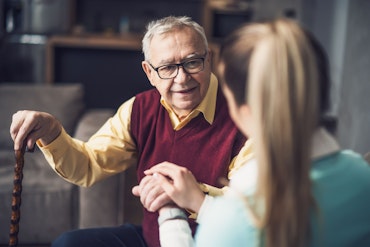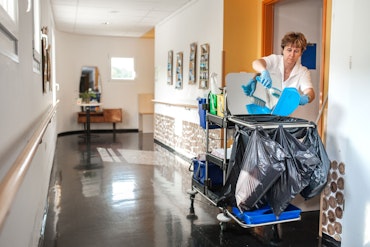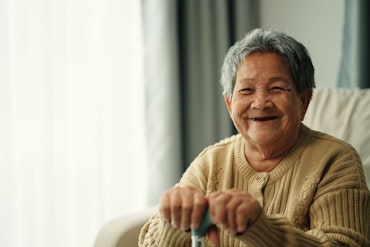Two-thirds of older Aussies are unprepared for bushfire season
Data from a recently released report highlights a concerning reality of older Australians having limited bushfire preparedness
![<p>Bushfires can cause significant destruction, but being prepared can ensure you keep yourself and others safe this bushfire season. [Source: Daniel Charron; Shutterstock]</p>](https://agedcareguide-assets.imgix.net/news/articles/wp/fencefire3009.jpg?fm=pjpg&format=auto&w=550&q=65)
Bushfires can cause significant destruction, but being prepared can ensure you keep yourself and others safe this bushfire season. [Source: Daniel Charron; Shutterstock]
Key points:
- A recently released report on Australians’ preparedness for bushfires highlights concerns regarding older Australians’ understanding of bushfire risk
- Former Deputy Commissioner for Fire and Rescue NSW Jim Smith highlighted that some older Australians should increase their awareness of the dangers associated with bushfires and learn ‘how to be prepared’
- Older Australians with long-term health conditions, such as arthritis, should be aware of how their conditions may impact their ability to safely evacuate during bushfires
Two-thirds of older Australians don’t feel prepared for the upcoming bushfire season, a statistic that may be related to evacuation concerns including poor health and mobility.
With bushfire season fast approaching, data in a recently released report highlights that some older Australians may need to adjust their approach to preparing for bushfires.
Approximately 1,000 Australians were surveyed by insurance provider, Youi, about their attitudes and bushfire planning. Despite two-thirds of older Australians feeling unprepared, 61 percent of Australians aged 58 years and older are not concerned about bushfires and the associated risk.
The Fire Danger Period can vary between states and areas but can begin in October and continue until May according to Country Fire Service Victoria. This means that open flames in an outdoor space without a permit are prohibited to prevent uncontrollable fires from starting.
Head of Marketing Strategy, Planning and Insights at Youi Dave Annesley commented on the number of Australians impacted by bushfires and how being prepared is essential to keep Australians safe.
“[…] We’ve received over 1,000 bushfire-related claims in the past 10 years and know how devastating [bushfires] can be for families. Simple steps can go a long way and we want Aussies to get on top of them,” he said.
“Being informed and educated on bushfire risk and preparation is key. Youi’s research indicates that 67 percent of those who bushfires had impacted in the past now harbour a more optimistic outlook towards their level of preparedness for potential future events.”
This outlook is shared by Former Deputy Commissioner for Fire and Rescue NSW Jim Smith, a volunteer firefighter who spent 36 years with the New South Wales Fire Service. Mr Smith encouraged Australians to assess the bushfire risk around their homes and take appropriate action.
“Despite New South Wales and Queensland making up more than a third of Australia’s land mass, both states are regularly affected by bushfires, the survey highlights that residents in these areas are least likely to be aware of the risk,” he said.
“With bushfire season upon us, it’s imperative that Aussies are educating themselves and their families on how to be prepared.
“[…][According to the data], older [Australians] are the least likely to be aware of the danger, despite having lived through the deadliest bushfire seasons in Australian history, including the Black Summer fires of 2019-2020, the Black Saturday fires of Victoria in 2009 and the Ash Wednesday fires of 1983, among many others.”
Older Australians should be aware of the risks and extra measures that may be required for them to evacuate safely, such as difficulties related to their health.
Approximately 86 percent of older Australians live with at least one long-term health condition such as arthritis and asthma, as per the latest data from the Australian Bureau of Statistics.
People with arthritis, such as osteoarthritis, can experience pain related to swelling, stiffness and a loss of flexibility, making it challenging to stay mobile. Experiencing difficulty with mobility means that affected older Australians may take longer to safely evacuate from bushfire-prone areas and should plan accordingly.
Additionally, people with asthma should have an asthma-related bushfire plan in place as smoke and increased air pollution can trigger asthma attacks.
Approximately 11.6 percent of older Australians live with asthma, as per the latest data from the Australian Bureau of Statistics.
Talk to your general practitioner about getting a written asthma plan and ensure you have a spare inhaler in a safe place for emergencies.
Researchers interviewed older Australians about their experiences of bushfires, including one 62-year-old woman who highlighted how she was impacted by this natural disaster.
“We lost everything. Our home and all our belongings. Our sheds with every tool my [husband] owned. Our machinery. Everything we owned,” she said.
Older Australians can access the Bushfire Preparation Quiz on the Youi website to assess their bushfire risk.
However, ways to reduce your home’s bushfire risk before, during and after the season include:
- maintaining the property, e.g. clearing gutters, removing leaf debris and keeping grasses short;
- ensuring your building and home contents insurance include bushfire protection; and
- assess your home for fire hazards including petrol cans and large trees.
Eligible older Australians may be able to receive home and garden maintenance through the Commonwealth Home Support Programme or as part of a Home Care Package.
Also, every household and aged care home should have a bushfire evacuation plan, including a kit.
The survival kit should include items such as important documents, e.g. passports, insurance papers and medical prescriptions, medicines, food and bottled water, a battery-powered radio, a torch and a mobile phone with a charger.
Visit the South Australian Country Fire Service website for a comprehensive list of what to pack in your emergency kit.
While being prepared is an essential part of keeping safe this fire season, older Australians should also be aware of where to get current and relevant information including:
- following local Country Fire Service and State Emergency Service social media pages, i.e. Facebook or X;
- listening to the local AM/FM station on a portable battery-powered radio;
- calling the Bushfire Information Hotline 1800 362 361;
- talking to neighbours and local friends and family; and
- visiting The Bureau of Meteorology website for heatwave updates.
The Black Saturday Bushfires are classified as the worst bushfire in Australia’s history, an event that killed 173 people, burned 430,000 hectares and affected almost 80 communities.
Additionally, the bushfires in the summer of 2019 to 2020 impacted approximately three billion animals and burnt up to 19 million hectares.
Read more about the impact of the 2020 bushfires on older Australians in this article: Bushfire affected aged care facilities and services facing challenges.
Are you prepared for the upcoming bushfire season?
Let the team at Talking Aged Care know on social media.
For more information and news in the aged care industry, subscribe to our free newsletter.
Relevant content:
How your city shows your age in Australia
Aged care quality could improve if allied health trainees receive financial assistance
One-of-a-kind gallery opens today, featuring artworks by artists with dementia























